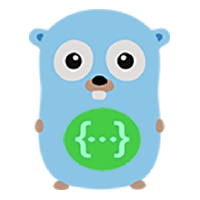Automatically generate RESTful API documentation with Swagger 2.0 for Go.
swag converts Go annotations to Swagger Documentation 2.0. And provides a variety of builtin web framework lib. Let you can quickly integrated in existing golang project(using Swagger UI) .
- Basic Structure
- API Host and Base Path
- Paths and Operations
- Describing Parameters
- Describing Request Body
- Describing Responses
- MIME Types
- Authentication
- Basic Authentication
- API Keys
- Adding Examples
- File Upload
- Enums
- Grouping Operations With Tags
- Swagger Extensions
-
Add comments to your API source code, See Declarative Comments Format
-
Download swag by using:
$ go get -u github.com/swaggo/swag/cmd/swag- Run the swag in project root folder which contains
main.gofile, The swag will parse your comments and generate required files(docsfolder anddocs/doc.go).
$ swag initThis example source here.
1.After using swag to generate Swagger 2.0 docs. Import following packages:
import "github.com/swaggo/gin-swagger" // gin-swagger middleware
import "github.com/swaggo/gin-swagger/swaggerFiles" // swagger embed filesSupported Web Framework in generate swagger middleware
2.Added General API Info annotations in main.go code:
// @title Swagger Example API
// @version 1.0
// @description This is a sample server celler server.
// @termsOfService http://swagger.io/terms/
// @contact.name API Support
// @contact.url http://www.swagger.io/support
// @contact.email [email protected]
// @license.name Apache 2.0
// @license.url http://www.apache.org/licenses/LICENSE-2.0.html
// @host localhost:8080
// @BasePath /api/v1
// @securityDefinitions.basic BasicAuth
// @securityDefinitions.apikey ApiKeyAuth
// @in header
// @name Authorization
// @securitydefinitions.oauth2.application OAuth2Application
// @tokenUrl https://example.com/oauth/token
// @scope.write Grants write access
// @scope.admin Grants read and write access to administrative information
// @securitydefinitions.oauth2.implicit OAuth2Implicit
// @authorizationurl https://example.com/oauth/authorize
// @scope.write Grants write access
// @scope.admin Grants read and write access to administrative information
// @securitydefinitions.oauth2.password OAuth2Password
// @tokenUrl https://example.com/oauth/token
// @scope.read Grants read access
// @scope.write Grants write access
// @scope.admin Grants read and write access to administrative information
// @securitydefinitions.oauth2.accessCode OAuth2AccessCode
// @tokenUrl https://example.com/oauth/token
// @authorizationurl https://example.com/oauth/authorize
// @scope.admin Grants read and write access to administrative information
func main() {
r := gin.Default()
c := controller.NewController()
v1 := r.Group("/api/v1")
{
accounts := v1.Group("/accounts")
{
accounts.GET(":id", c.ShowAccount)
accounts.GET("", c.ListAccounts)
accounts.POST("", c.AddAccount)
accounts.DELETE(":id", c.DeleteAccount)
accounts.PATCH(":id", c.UpdateAccount)
accounts.POST(":id/images", c.UploadAccountImage)
}
//...
}
r.GET("/swagger/*any", ginSwagger.WrapHandler(swaggerFiles.Handler))
r.Run(":8080")
}
//...3.Added API Operation annotations in controller code
package controller
import (
"fmt"
"net/http"
"strconv"
"github.com/gin-gonic/gin"
"github.com/swaggo/swag/example/celler/httputil"
"github.com/swaggo/swag/example/celler/model"
)
// ShowAccount godoc
// @Summary Show a account
// @Description get string by ID
// @ID get-string-by-int
// @Accept json
// @Produce json
// @Param id path int true "Account ID"
// @Success 200 {object} model.Account
// @Failure 400 {object} httputil.HTTPError
// @Failure 404 {object} httputil.HTTPError
// @Failure 500 {object} httputil.HTTPError
// @Router /accounts/{id} [get]
func (c *Controller) ShowAccount(ctx *gin.Context) {
id := ctx.Param("id")
aid, err := strconv.Atoi(id)
if err != nil {
httputil.NewError(ctx, http.StatusBadRequest, err)
return
}
account, err := model.AccountOne(aid)
if err != nil {
httputil.NewError(ctx, http.StatusNotFound, err)
return
}
ctx.JSON(http.StatusOK, account)
}
// ListAccounts godoc
// @Summary List accounts
// @Description get accounts
// @Accept json
// @Produce json
// @Param q query string false "name search by q"
// @Success 200 {array} model.Account
// @Failure 400 {object} httputil.HTTPError
// @Failure 404 {object} httputil.HTTPError
// @Failure 500 {object} httputil.HTTPError
// @Router /accounts [get]
func (c *Controller) ListAccounts(ctx *gin.Context) {
q := ctx.Request.URL.Query().Get("q")
accounts, err := model.AccountsAll(q)
if err != nil {
httputil.NewError(ctx, http.StatusNotFound, err)
return
}
ctx.JSON(http.StatusOK, accounts)
}
//...4.Run it, and browser to http://localhost:8080/swagger/index.html. You will see Swagger 2.0 Api documents as bellow:
This project was inspired by swagger but simplified the usage of complexity and support a variety of web framework.



